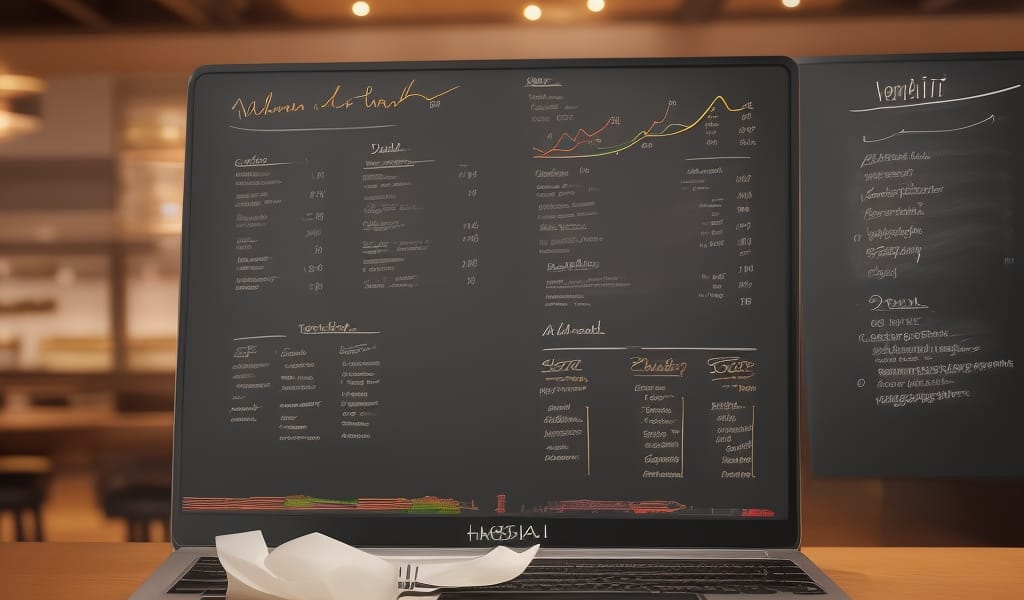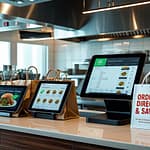Key Takeaways:
- Leverage sales data to identify high-performing and low-performing menu items for price adjustments.
- Use data analytics to determine optimal pricing that maximizes profit and enhances customer value.
- Regularly monitor and analyze sales data to identify pricing trends and customer preferences.
- Implement price optimization techniques to ensure your menu pricing remains competitive in the market.
- Utilize data analytics to test different pricing strategies and measure their impact on sales and profits.
Using Data Analytics to Optimize Menu Pricing
Make smarter pricing decisions with data
Restaurant success hinges on numerous factors, including ambiance, customer service, food quality, and menus that resonate with patrons. However, one aspect often overlooked is the strategic use of data analytics to inform menu pricing. By harnessing sales data, restaurant operators can significantly enhance profitability and customer satisfaction through effective price optimization.
In this article, we’ll explore how restaurant owners and managers can leverage data analytics tools to refine menu pricing, highlighting practical strategies and real-world examples from the industry.
The Importance of Data in Menu Pricing
Pricing decisions based solely on intuition or competitor rates rarely achieve long-term profitability. Today’s restaurant industry is highly competitive, and consumers are increasingly price-sensitive. Leveraging data analytics allows restaurant operators to make informed decisions that balance profitability with customer satisfaction.
Analyzing sales data provides insights into customer preferences, purchasing patterns, and price sensitivity. By using this information, restaurants can set menu prices that maximize revenue without alienating customers.
Understanding Price Sensitivity
Price sensitivity refers to how demand for an item changes as its price fluctuates. Some dishes may see a significant drop in sales with even a minor price increase, while others remain popular despite higher pricing. Using historical sales data can pinpoint which menu items are most sensitive to price changes.
- Identify menu items with stable demand regardless of price changes.
- Highlight dishes sensitive to price fluctuations, requiring careful price adjustments.
- Understand customer willingness to pay, improving overall pricing strategy.
Tracking Profitability Per Menu Item
Not all menu items contribute equally to profitability. By analyzing sales data, restaurant operators can identify which dishes generate the highest margins and which may require reevaluation. This clarity enables strategic adjustments to menu offerings and pricing.
- Measure item profitability by calculating food costs, preparation time, and selling price.
- Prioritize high-margin items in promotional efforts.
- Evaluate low-margin dishes routinely, adjusting prices or recipes as needed.
Leveraging Sales Data for Price Optimization
Sales data provides a wealth of actionable insights when it comes to optimizing menu pricing. By systematically collecting and analyzing this information, restaurants can make well-informed pricing decisions.
Implementing Tiered Pricing Strategies
A tiered pricing strategy involves offering multiple price points to cater to different customer segments. Sales data helps identify customer preferences and spending habits, enabling targeted pricing adjustments.
- Create premium menu options to target customers seeking higher-value experiences.
- Offer budget-friendly choices to attract price-conscious diners.
- Monitor sales performance continuously to refine pricing tiers effectively.
Dynamic Pricing Based on Demand Patterns
Dynamic pricing is adjusting menu prices based on real-time or predicted demand. By analyzing historical sales data, restaurant operators can identify peak periods and adjust pricing accordingly to maximize revenue.
- Increase prices during high-demand periods such as weekends or holidays.
- Offer promotions or discounts during slow periods to boost traffic.
- Continuously analyze data to fine-tune pricing adjustments.
Practical Steps for Optimizing Your Menu Pricing
Implementing data-driven menu pricing doesn’t have to be complicated. Here are actionable steps restaurant owners and managers can take to get started:
Step 1: Gather and Centralize Your Data
Effective price optimization begins with accurate and comprehensive sales data. Ensure your POS system tracks detailed sales information, including item popularity, average spend, and peak sales periods.
- Invest in a robust POS system with detailed analytics capabilities.
- Regularly export and review sales data for patterns and insights.
- Centralize data management to simplify analysis and decision-making.
Step 2: Analyze Customer Buying Behavior
Digging into customer buying patterns provides insights essential for effective menu pricing. Evaluate metrics such as average transaction size, frequency of visits, and item-specific popularity.
- Identify best-selling dishes to highlight and prioritize.
- Recognize low-performing items to reconsider pricing or placement.
- Consider customer feedback and behavior trends alongside data.
Step 3: Test Pricing Adjustments
Rather than making sweeping changes, test menu price adjustments incrementally. Use controlled experiments to measure how small price changes affect sales volume and customer satisfaction.
- Adjust pricing on select menu items for limited periods.
- Monitor sales data closely to gauge customer response.
- Iterate based on results to refine your overall pricing strategy.
Step 4: Monitor Competitor Pricing
While your data is paramount, competitor pricing strategies also influence customer expectations. Regularly review market pricing to ensure your offerings remain competitively priced and attractive.
- Identify your closest competitors and track their menu pricing regularly.
- Benchmark your prices against industry averages in your market.
- Balance competitive insights with your data-driven approach.
Industry Examples of Successful Data-Driven Pricing
Many restaurants have successfully implemented data analytics to optimize their menu pricing. Here’s how two notable examples have leveraged sales data to improve profitability:
Example 1: Fast-Casual Chain Boosts Revenue with Tiered Pricing
A national fast-casual chain analyzed customer buying patterns and discovered significant demand for premium options. By introducing higher-priced premium dishes alongside standard menu items, they increased overall revenue by 15% without negatively impacting sales volume.
Example 2: Independent Bistro Utilizes Dynamic Pricing
An independent bistro faced fluctuating demand throughout the week. Using historical sales data, they implemented dynamic pricing, slightly increasing prices during weekend evenings and offering discounted lunch specials mid-week. This strategy boosted weekday lunch traffic by 20% and increased weekend profitability by approximately 10%.
Common Challenges and How to Overcome Them
Implementing data-driven pricing isn’t always straightforward. Below are common challenges and practical solutions to address them:
Data Collection Difficulties
Restaurants often struggle with incomplete or inconsistent data collection.
- Invest in user-friendly POS systems that automatically capture detailed sales data.
- Train staff thoroughly on correct data-entry practices.
- Regularly audit data for accuracy and completeness.
Resistance to Change
Staff and customers may resist price adjustments, especially if they’re accustomed to specific pricing structures.
- Communicate clearly to staff the rationale behind pricing changes.
- Implement pricing strategies gradually to help customers adjust.
- Monitor customer feedback closely and remain flexible in response.
Misinterpretation of Data
Incorrect analysis or misinterpretation of sales data can lead to poor pricing decisions.
- Consider partnering with data analytics professionals or consultants.
- Provide adequate training for managers in basic data interpretation methods.
- Regularly cross-reference findings with qualitative customer feedback for accuracy.
Conclusion
Data analytics offers restaurant owners and managers a powerful tool to optimize menu pricing effectively. By understanding customer behavior, monitoring profitability, and carefully testing pricing adjustments, restaurants can significantly improve their overall financial performance. Implementing these strategies, coupled with continuous monitoring and refinement, can drive sustained growth and competitive advantage in an increasingly challenging industry landscape.






Comments
Be the first to comment on this article.